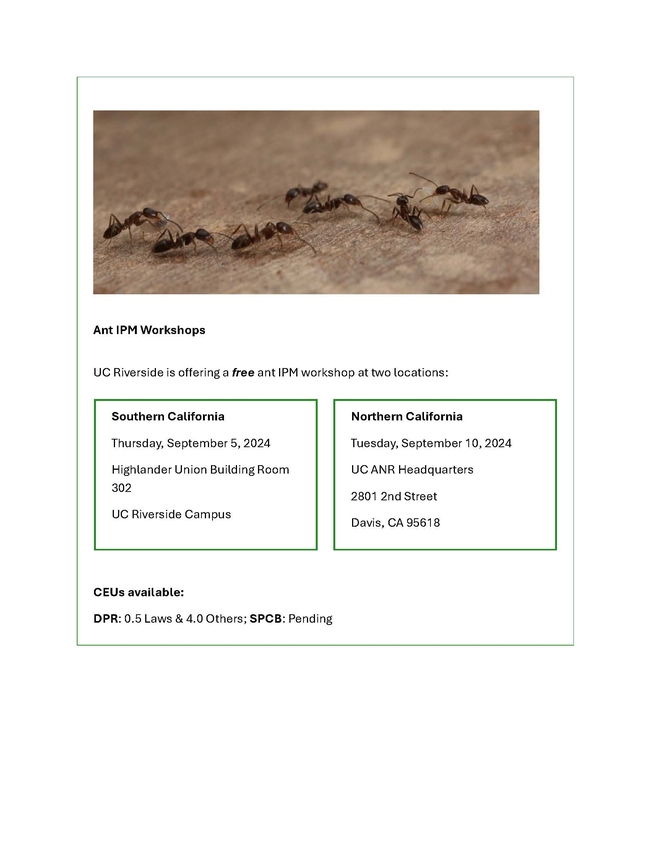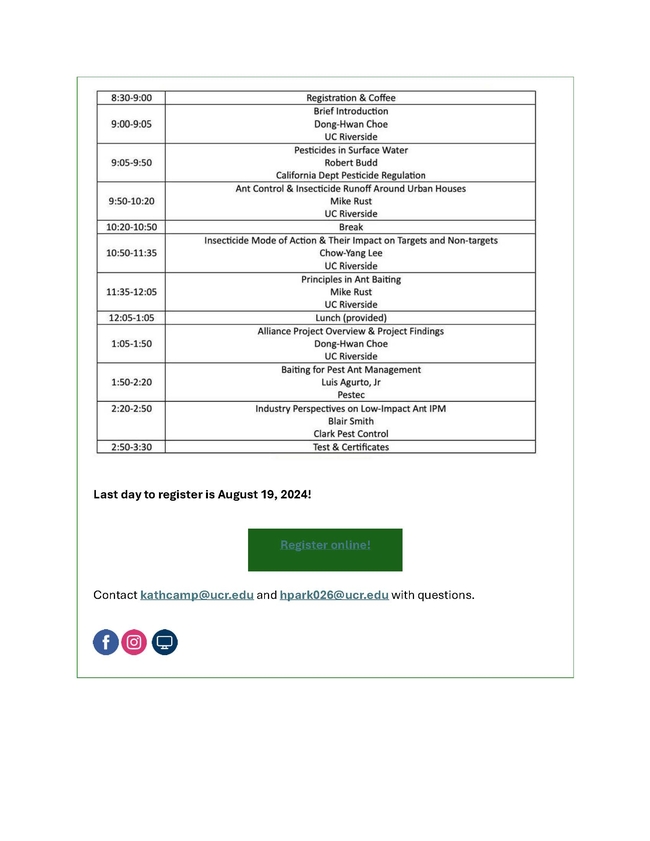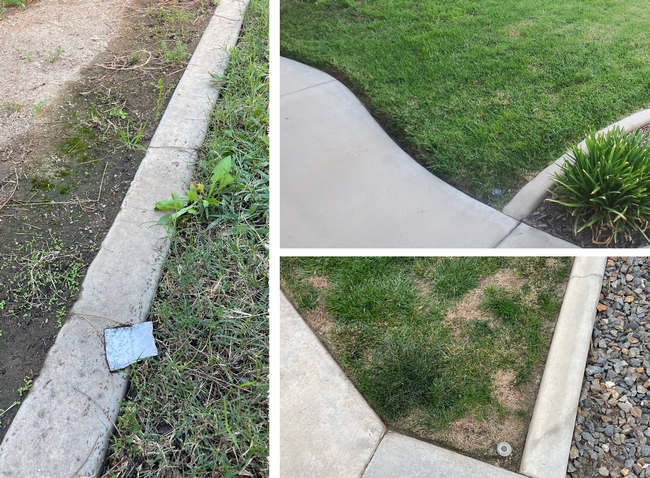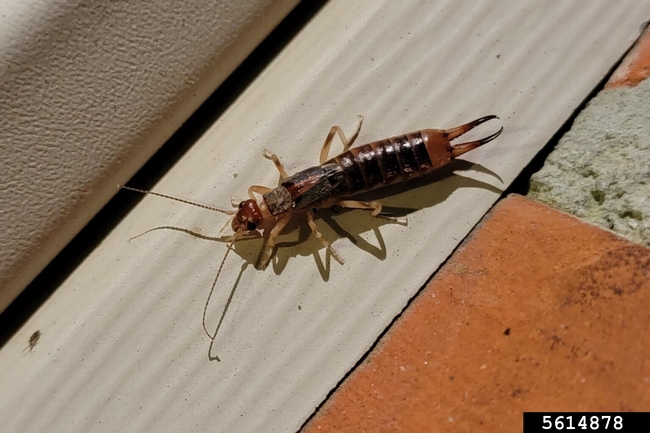- Author: Ben A Faber
In Person Ant IPM Workshops
Program for both workshops
|
Schedule
|
Speakers
|
Topics & Itinerary
|
|
8:00 AM – 8:15 AM
|
|
Arrival / Set-Up
|
|
8:30 AM – 9:00 AM
|
|
Registration & Coffee/Snacks
|
|
9:00 AM – 9:05 AM
|
Dong-Hwan Choe
|
Brief introduction
|
|
9:05 AM – 9:50 AM
|
Robert Budd
|
Pesticides in surface water
|
|
9:50 AM – 10:20 AM
|
Michael ?Rust
|
Ant control & Insecticide runoff around urban houses
|
|
10:20 AM – 10:50 AM
|
|
Break
|
|
10:50 AM – 11:35 AM
|
Chow-Yang Lee
|
Insecticide mode of action and their impact on targets and non-targets
|
|
11:35 AM – 12:05 PM
|
Michael Rust
|
Principles in ant baiting
|
|
12:05 PM – 1:05 PM
|
|
Lunch
|
|
1:05 PM – 1:50 PM
|
Dong-Hwan Choe
|
Alliance project overview and project findings
|
|
1:50 PM – 2:20 PM
|
Luis Agurto
|
Baiting for pest ant management
|
|
2:20 PM – 2:50 PM
|
Blair Smith
|
Industry perspectives on low-impact ant IPM
|
|
2:50 PM – 3:30 PM
|
|
Tests & Certificates
|
Managing citrus mealybug – does ant control help?
Sandipa Gautam, Sanjeev Dhungana, and David Haviland
UC Co-operative Extension
Starting 2019/20 season, pest control advisors started noticing citrus mealybug infestations in multiple citrus varieties that continued to increase in acreage in the San Joaquin Valley. Although present in the citrus systems, mealybugs were considered to be a minor pest and kept well under check by natural enemies until recently.
What are mealybugs?
Mealybugs are soft, oval, flat, distinctly segmented insects whose body is covered in white mealy wax. Citrus mealybug, Planococcus citri is the most common species associated with citrus. Females lay ~600 eggs in egg sacs loosely held by white cottony flint. Crawlers are yellowish, and can move or be carried by ants, birds, or the wind to start new infestations. Crawlers feed by sucking sap using straw-like stylets and soon develop a waxy covering (Fig. 1C). Like California red scale, females molt and stay as third instars until mated by a male. Males go through a pupal stage and emerge as adults with wings that fly to seek a mate.
Mealybugs prefer the inside canopy of the tree and can be found under dense leaves, between clusters of fruits, or in other cryptic places where they can be difficult to find, especially when the population is low. As the season progresses and the tree flushes, blooms, and fruit develops, mealybugs move to the parts of the tree where nutrients flow. Ongoing research on seasonal phenology suggest that there are 5-6 generations in the San Joaquin Valley. The first generation starts from overwintering adult/egg populations in late March/early April. The second-generation crawlers/nymphs move to fruit in June/July. The remaining generations each year primarily feed and multiply on the fruit.
Mealybugs produce nutrient rich honeydew that is an attractive food source for ants. Ants have been reported to defend insect colonies from predators and parasitoids. In an early infestation, ant trails can be used as an indicator to locate mealybug infestations or other sap sucking pests. Managing sugar feeding ants in citrus orchards has shown increased biocontrol of sap sucking insects. It is plausible that loss of chlorpyrifos as an ant control tool may have aggravated ants thereby aiding to increase mealybug pressure in recent years.
As mealybugs have become a reoccurring pest in citrus orchards, University of California researchers-initiated studies to work towards developing strategies to manage this pest. Research funded by Citrus Research Board and led by Gautam lab is investigating biology, field ecology, and management of mealybugs. During field visits, our observations have shown that various ant species of were present throughout the growing season attending mealybug colonies.
Does managing ant help suppress mealybug?
UC researchers have documented that managing sugar feeding ants increases biocontrol, thereby reducing the pest pressure of sap sucking insects. When ant densities are were reduced >90%, there was ~90% less mealybug on twigs and complete elimination of mealybug was reported from fruit. However, managing ants has been a challenge since the use of chlorpyrifos was banned. To address this need, UC researchers have worked to develop and test different types of hydrogel beads for delivering insecticide products to sugar-feeding species of ants.
Research led by David Haviland has focused on the experimental use of commercially-available polyacrylamide hydrogel beads for large field-scale applications. In 2023 a large-scale field trial was conducted in a 20-acre grapefruit block in Sanger, California. Two applications of hydrogel beads laced with insecticides were made on Aug 2 and August 30, 2023. Post-treatment evaluations for ant density were done on 24 trees/plot by counting the number of ants that passed through a graft union for 15 secs weekly for 4 weeks after each application. The effects of ant suppression on mealybug densities was evaluated in October 2023 by counting the number of fruits infested with mealybugs (presence/absence) on 30 fruits from the inside canopy. Insecticide treatments had variable results on ant density, with lowest ant density consistently found in plots treated with thiamethoxam. Similarly, plots treated with thiamethoxam had the lowest populations of mealybugs.
There's a lot more to this story:
https://ceventura.ucanr.edu/Com_Ag/Subtropical/?newsletteritem=100493

It's that time of the year again – Ant Season!
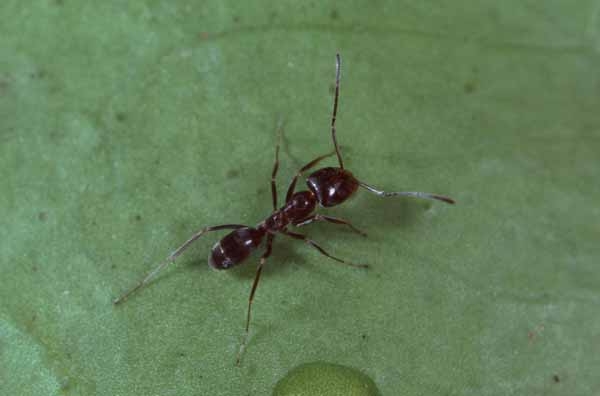
While it is not realistic to eradicate all ants from your backyard, you can effectively reduce the number of ants entering your home by following a 3-Step integrated approach as follows:
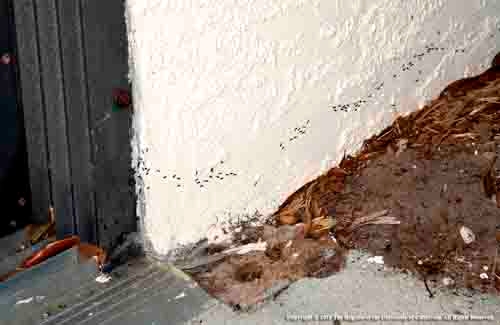
1) Identifying the location where the ants are getting into the house. Inspect baseboards, floors, electrical outlets, vents, pipes, drains and walls for any entryways and seal them off (caulk is good for this). Destroy any nesting sites found close to the house. Cut back trees, shrubs or wooded material touching the house and clear away mulch or debris that is next to the house.
2) Clean up food and water sources in the home. All sources of “attractive” food should be removed or securely sealed. Use soapy water to kill ants and eliminate their trails.
Moderate (trails of hundreds of ants) and Severe (several hundred to thousands of ants continue to invade for weeks or months). Supplement steps 1 and 2 above with the addition of bait stations as follows:
3) Install bait dispensers around the outside of the house (UC Researchers have had success using bait dispensers such as KM AntPro Liquid Bait Dispenser). Baits are more effective and less toxic than traditional pesticide treatments for ants. Baits are insecticides mixed with materials that attract worker ants. The advantage of a bait station over an insecticide spray is that the spray only kills the worker ant while the bait station allows worker ants to take the bait back to the colony to feed and kill the colony ants, including the queen ant. When all the queens die, the colony is destroyed. Continue to refill dispensers regularly with liquid borate-based bait until the ant problem ceases. It is critical that you select the right bait/attractant for Argentine ants (liquid baits with 1% or less borate are suggested). Install at least one dispenser on each side of the house, next to structures where ants are trailing (but at least 5 ft. from any nest). Keep ant bait stations out of direct sunlight.
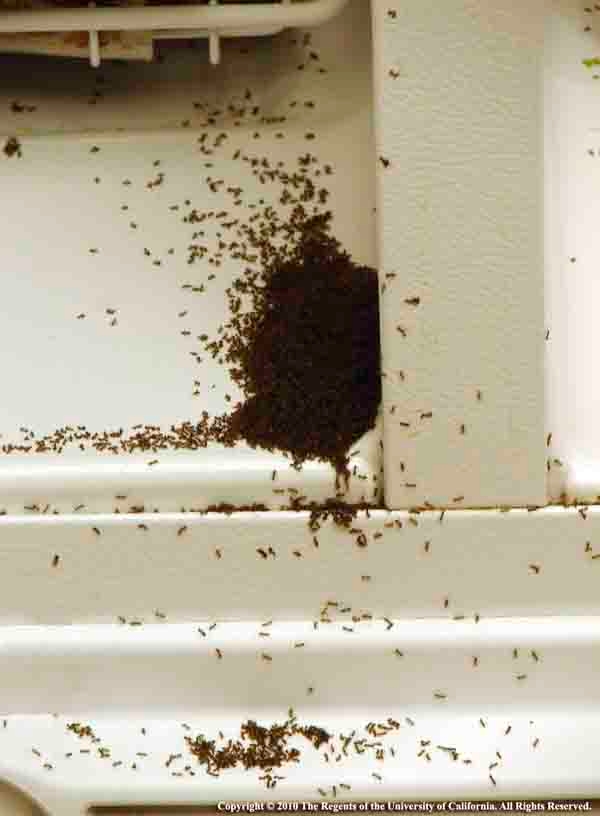
For more information on dealing with the various pests that plague your home and garden, attend the workshop on Integrated Pest Management (IPM) May 17, at the Demonstration Garden at Patrick Ranch. This workshop is part of the Master Gardeners' 2024 Spring Workshop Series. For information about all the workshops, and to register, visit our website. All workshops are free, but registration is required.
UC Master Gardeners of Butte County are part of the University of California Cooperative Extension (UCCE) system. To learn more about us and our upcoming events, and for help with gardening in our area visit our website. If you have a gardening question or problem, email the Hotline at mgbutte@ucanr.edu or leave a phone message on our Hotline at 530-552-5812. To speak to a Master Gardener about a gardening issue, or to drop by the MG office during Hotline hours, see the most current information on our Ask Us section of our website.
- Author: Dong Hwan Choe
- Author: Chow-Yang Lee
- Author: Michael K Rust
Ants are one of the major seasonal pests around structures in California's urban environments. Pest management companies throughout the state report that ants are responsible for a significant proportion of their pest control services. In urban residential areas of California, the Argentine ant, Linepithema humile, is the most common nuisance ant species treated by pest management professionals (PMPs) as well as the public themselves (Figure 1).
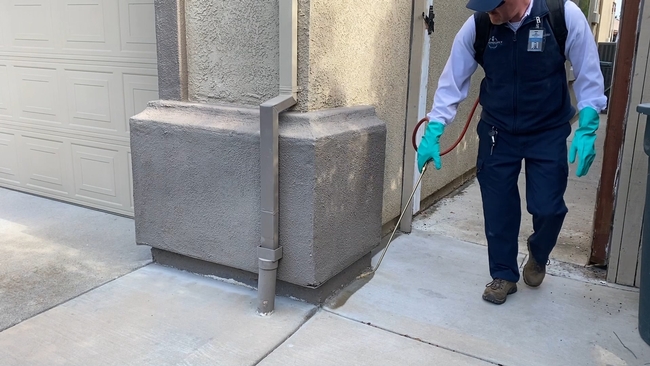
While contact insecticides are frequently used to control Argentine ants, they also contribute to environmental contamination via drift and runoff. However, insecticide applications following California's recent regulatory changes and label updates may fail to control target pest ants consistently potentially resulting in repeated insecticide applications (Choe et al. 2021).
Baiting for ant control
Baiting (Figure 2) can reduce the need for insecticide spray applications. Active incorporation of baits in a management program may help to lower the risk of environmental contamination caused by insecticide drift and run-off. For Argentine ants, which often form large colonies with multiple nest sites and reproducing queens, the initial application of perimeter spray would still be needed to provide a quick knockdown of foraging ant populations during peak season (June or July). However, baits are particularly useful for subsequent maintenance visits (monthly or bimonthly). In fact, baiting has been demonstrated to be an effective tool for maintenance services for Argentine ants (see References).
Many bait products are available for professional use, and when strategically used, they can be effective at keeping ant numbers low (at acceptable levels) following the initial spray treatment. Gel / liquid / granular bait products containing boric acid, indoxacarb, and thiamethoxam are effective for Argentine ant control.
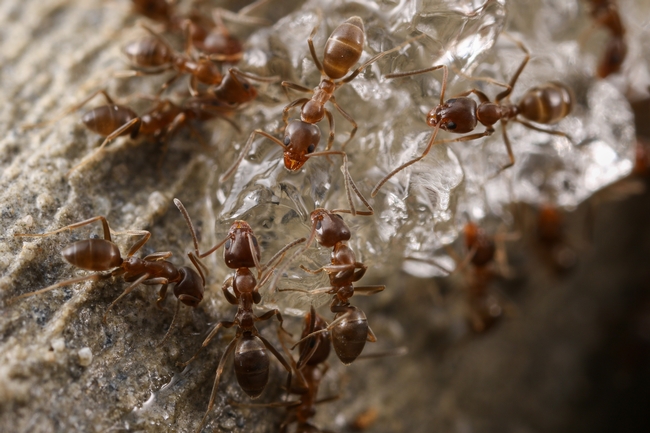
Importance of bait placement
If PMPs choose to incorporate baits as a main tool for maintenance visits, there is an important question to be answered: Where to place the bait? Unless bait stations are already installed in specific locations and periodically serviced (e.g., cleaning and refilling), PMPs must determine where the baits need to be applied during their visit.
Unlike insecticide sprays, the ants must consume the bait to be effective. Baits placed in just any location cannot be expected to work. Strategic placement of baits is critical to maximize the bait consumption by foraging ants and control of the pest ant populations. In fact, baits start losing their palatability (attractiveness as food) from the moment they are applied in the environment.
Since all ant foragers are liquid feeders, keeping the bait hydrated (minimal water loss) is vital to maximize bait consumption. Contamination and degradation might also impact bait palatability over time. Placing baits in the areas where the ants are currently traveling or foraging will ensure maximum bait consumption. Baits are typically more expensive than insecticide sprays (based on the product cost to treat a unit area), so strategic placement of baits is also crucial from an economic standpoint.
Label information on bait products usually includes specific tips regarding bait placement. For example, one commercial ant bait product label states, “place bait on, into, or adjacent to structures where ants are observed, adjacent to ant trails and to areas suspected of ant activity.” Another product's label instruction states, “locate areas around the building where ants are seen trailing. Apply [the bait] in areas inaccessible to children and pets. For a perimeter defense system, place bait stations near the foundation or where ant trails are found.” In essence, these instructions require knowledge of the locations where the ants are currently active or likely will be within a day or two.
Finding ant trails might be easy if customers have already observed or reported the ant infestation. However, finding active ant trails could be time-consuming, and time for careful inspection to discover active ant trails around the structure during a service visit is often limited.
Ant trail location study
Is there a quick and reliable way to identify the most likely places where Argentine ants would trail and forage in residential outdoor settings? Knowing this would make it possible to quickly determine the best sites for bait placement without looking for ant trails. Argentine ants are known to rely on chemical signals (trail pheromone) as well as structural features (structural guidelines) when maneuvering in the environment (Klotz et al. 1997). Many residential settings share some common structural features such as concrete, lawn, mulch, plant, and soil. If common features can be used to reliably locate the foraging ant trails, that could reduce the time needed to look for ant trails during bait applications.
| Site types | Surface/characteristics |
|---|---|
| L | Lawn |
| C | Concrete |
| D | Dumpster/trashcan |
| T | Tree |
| V | Vegetation/bush |
| LC | Lawn – concrete interface |
| SC | Soil – concrete interface |
| MC | Mulch – concrete interface |
| BS | Building (vertical surface) – soil interface |
| BC | Building (vertical surface) – concrete interface |
A simple field experiment was designed to identify the best sites for bait placement. The study was conducted in October on the University of California, Riverside campus. Several site types were identified based on structural characteristics. Five of these site types were characterized by the presence of a single surface type or a single characteristic item—lawn (L), concrete (C), dumpster or trashcan (D), tree (T), vegetation/bush (short plant without trunk, V). Five other site types were characterized by the presence of two surface types and the interface between them – lawn and concrete (LC), soil and concrete (SC), mulch and concrete (MC), building and soil (BS), and building and concrete (BC). The list of site types is provided in Table 1.
The experiment was replicated 5-13 times for each of the site types. Small squares of cotton (monitoring squares) soaked in 25% (wt:wt) sucrose solution were placed in these sites. The monitoring squares were collected after one hour, and Argentine ants on the cotton squares were counted. The number of ants on the monitoring square was used as the quantitative indicator for ant foraging activity.
The overall data suggest the interface between lawn and concrete (LC) was the location with the highest level of Argentine ant foraging activity (Figure 3). The interface between lawn and concrete (LC) had a much higher number of ants than its single-surface counterparts (L, lawn only or C, concrete only). Bases of the tree (T) and dumpster site (D) also had a good amount of ant activity, but there can be significant amounts of variation in ant activity, especially for dumpster sites (i.e., hit-or-miss). Open concrete surface (C) had the lowest level of foraging activity. Lawn (L), vegetation/bush (V), and four other interface types (SC, MC, BS, and BC) showed intermediate levels of ant activity.

Certain structural and landscape features can be used to quickly determine the best locations for inspection and bait (liquid or gel) placement against Argentine ants. Interfaces between lawns and concrete are among the most common structural features of residential outdoor settings. For example, they are found between lawns and various concrete surfaces, such as driveways, sidewalks, patios, and landscape curbing (Figure 4).
There are possible reasons why the Argentine ants prefer to trail along the interface between lawn and concrete. Preferred microclimate conditions (moisture, temperature) may exist in that location. The absence of heavy vegetation along the lawn and concrete interface (ease of travel), but still with some level of protection (partially shaded), may also be preferred by trailing ants. Environmental factors such as relatively high humidity and partial protection from direct sunlight would also be advantageous in keeping the liquid or gel bait palatable for extended periods.
Take-home message
It is vital to effectively manage pest ants in urban environments with minimal impacts on human health and the environment. To help reduce our reliance on repeated application of insecticide spray products, baiting should be considered for maintenance service visits for pest ants. To maximize the impact of baiting, the baits should be placed along lawn and concrete surfaces. Of course, a control program should not rely only on baiting but also be supplemented with non-chemical techniques such as exclusion, sanitation, removal of honeydew sources, and water management.
It is important to note that the information and data discussed in this article are focused on Argentine ants and sugar-based bait products targeting this species. Thus, the information may or may not directly apply to other ant species with different feeding habits, foraging strategies, or population structures.
For more information about ant management, see the UC IPM Ant page https://ipm.ucanr.edu/PMG/invertebrates/links.ants.html.
References cited
Choe D-H, Paysen, E, Greenberg L, Campbell K, Rust MK. 2019. A closer look: Argentine ant control. Pest Control Technology. GIE Media, Inc. p. 130-135. Vol. 47. No. 10.
Choe D-H, Tay J-W, Campbell K, Park H, Greenberg L, Rust MK. 2021. Development and demonstration of low-impact IPM strategy to control Argentine ants (Hymenoptera: Formicidae) in urban residential settings. J. Econ. Entomol. 114: 1752–1757.
Klotz JH, Greenberg L, Shorey HH, Williams DF. 1997. Alternative control strategies for ants around homes. J. Agric. Entomol. 14: 249-257.
[Originally featured in the Spring 2024 edition of the Green Bulletin Newsletter for structural and landscape pest professionals.]
- Author: Belinda Messenger-Sikes
During the holiday season, the only creatures you want stirring in your home are your family, friends, and pets. But as temperatures drop, and the rain returns, some pests may seek shelter indoors with you. Rats and mice can be problems all year but in the cold weather, they prefer the warmth of your home to being outdoors and you might see more in your home.
Pests invade homes for varying reasons during autumn and winter. Common outdoor species such as Argentine ants, Oriental (or Turkestan) cockroaches, sowbugs and pillbugs, springtails, and earwigs, may simply be escaping harsh conditions such as freezing temperatures or small-scale flooding. Some insects, especially true bugs (Hemiptera); such as boxelder bug, bordered plant bug, milkweed bug and other seed bugs, false chinch bug, and various stink bugs, naturally seek out dry, protected cracks and crevices to spend the winter. In the landscape, such sites may be beneath loose tree bark or deep within firewood piles, but structural gaps, cracks and crevices may be warmer, drier, and more attractive to these overwintering bugs.
It's generally easier to keep pests out before they become a problem than to try and get rid of them once they infest your home. Exclude pests by sealing up possible entry points around doors, windows, foundations, chimneys, roof joints, shingles, and vents. Install door sweeps and threshold seals to get rid of gaps under and around doors. If you have gaps around windows, you can close them with weather stripping and expanding foam or install new screens.
Clean up the landscape around your home so pests have fewer places to live and breed. Move wood chips and other organic mulches, and firewood piles away from your home's perimeter and entryways. Drain any excess moisture near structural foundations and entryways.
If you spot nuisance pests like boxelder bugs, earwigs, springtails, and centipedes indoors, they can be simply swept up, vacuumed, or taken outside. Other pests like mice and rats need to be dealt with differently.
Ideally, mice and rats should be managed before they get inside. Check the exterior of your home for signs of a mice or rat infestation including droppings, gnaw marks, feeding damage, and rub marks. For mice and rats, tight fitting lids on garbage cans and compost containers will keep these rodents from finding a food source near your home and eventually coming indoors. Thin vegetation between shrubs and buildings and trim back overhanging trees. Roof rats will use climbing vegetation to scale buildings and seek shelter. Seal any cracks or gaps into your home that are larger than 1/4 inch. Screen or block potential entrances under eaves or overlapping roof sections. Use sheet metal or 1/8-inch wire hardware cloth to keep out mice and rats since rodents can gnaw through softer material like plastic or wood.
Snap traps are the safest, most effective, and most economical way to manage rats and mice. You can place traps outside the home to catch rodents before they enter. You can also place them inside if you spot signs of them there. Be sure to use the correct-sized traps and place them in secluded areas along walls, behind objects, in dark corners, and in places where droppings have been found.
Keep pests from ruining your holiday fun by denying them food, water, and shelter in your home. For more details about specific pests and their management, see the UC IPM website https://ipm.ucanr.edu/PMG/menu.homegarden.html.
[Originally featured in the Winter 2023-2024 edition of the Home & Garden Pest Newsletter.]


